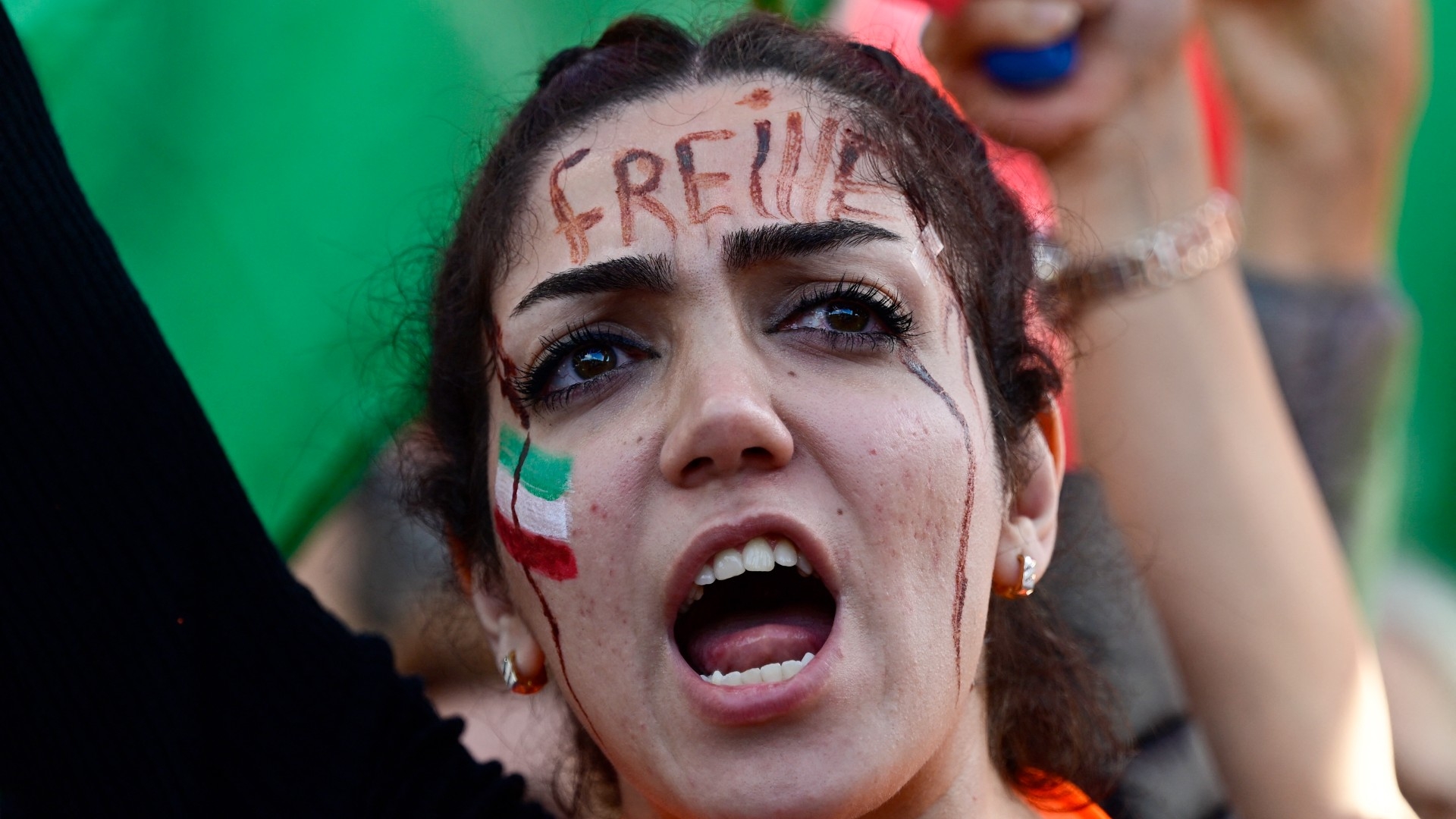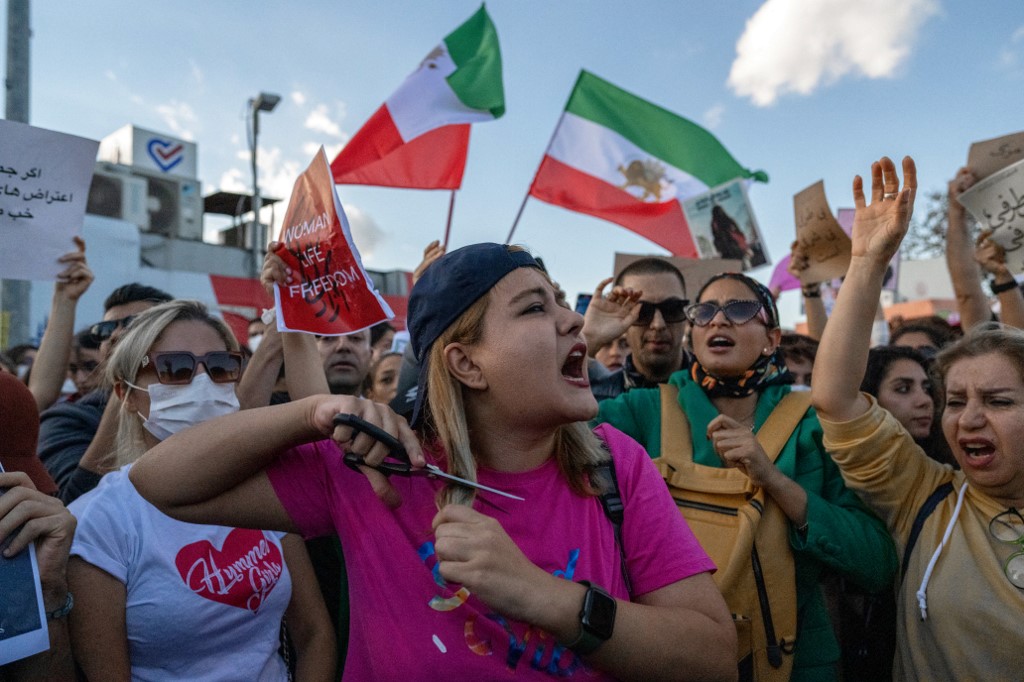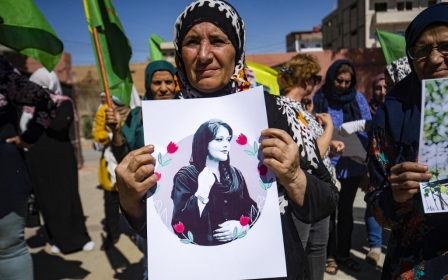Iran protests: How political groups are using the uprising for their own agendas

As I comfortably sit in my office and write about women’s rights, the women and girls of my motherland have started what we can only hope will be a revolution in Iran.
Like many Iranians abroad, I have followed every move, chant and effort in their struggle against decades of oppression. Besides sadness and anger, many of us abroad are plagued by a sense of guilt and helplessness.
The only commonality between the school veil ban in India and recent events in Iran is the attempt to control women
But there is something we can do: be “the voice of Iran” by supporting their efforts and amplifying their voices from our corners of the world. Yet, not everyone appears to understand this simple task. Various groups, from German and Indian political parties to factions within the Iranian diaspora itself, are trying to co-opt the movement for their own ends. It is pertinent to distinguish these opportunistic political agendas from the inclusive and united movement in Iran.
The protests in Iran started after a 22-year-old Kurdish-Iranian woman, Mahsa (Jina) Amini, died after being detained by the state’s morality police for insufficiently covering her hair under the compulsory hijab. This is not the first time Iranian women have protested against the country’s veiling laws and abusive powers of the morality police.
The veil has a complex history in Iran - one that, as in many places, is marked by men in power trying to control women.
New MEE newsletter: Jerusalem Dispatch
Sign up to get the latest insights and analysis on Israel-Palestine, alongside Turkey Unpacked and other MEE newsletters
During Reza Shah Pahlavi’s reign (1925-41), the practice of veiling was banned in Iran, with women encouraged to dress in “western” clothing. While his son and successor, Mohammad Reza Shah, later lifted this ban, he shared his father’s affinity for a western vision of modernity that clashed with more traditional ways of life.
Contrary ideologies
After the 1979 revolution, the state imposed the veil. Under both agendas, the veil constituted a crucial symbol for liberation from the constraints of the other side. While the monarchy portrayed unveiling as a step towards western modernity and away from religious tradition, for the Islamic regime, the compulsory veil served as opposition to western domination.
Despite contrary ideologies, both the Pahlavi monarchy and the current regime instrumentalised the bodies of Iranian women for their own political agendas. Compulsory veiling laws and veiling bans are both ways of controlling women, a form of patriarchal state violence.
And while Iranians are risking their lives to free Iran from the shackles of the regime, political groups have jumped at the opportunity to co-opt this feminist, inclusive revolution. In India, Hindu nationalists have used the Iranian protests to support their attacks against Muslims. In a recent Supreme Court hearing, authorities in Karnataka pointed to the anti-hijab protests in Iran as justification for the southern Indian state’s own veil ban in schools, part of a broader crackdown against Muslims in India.
But this framing neglects the fact that Iranian women are fighting against the compulsory hijab as part of a larger movement to free women from the control of patriarchal state violence. The only commonality between the school veil ban in India and recent events in Iran is the attempt to control women.
Meanwhile, in Germany, far-right politician Jurgen Braun has used Amini’s death and the protests in Iran as support for his party’s Islamophobic claims. Accusing the German government of taking insufficient action against the Islamic regime, he proclaimed that recent events in Iran were “very much related to the misogynistic and inhuman Islam”. For someone whose party (Alternative for Germany) thinks women should return to their traditional roles as housewives and regards feminism as hindering societal development, it is interesting to see this sudden concern for women’s rights.
A common strategy of Islamophobic politics involves the deliberate conflation of religious regimes, including Iran’s, with the religion of Islam, in an attempt to victimise Muslim women and vilify Muslim men. The co-optation of the Iran protests, a united movement against state violence, is thus beyond opportunistic.
Diverse demands
This opportunism is not limited to politicians, as sub-sections of the divided Iranian diaspora are making the same mistakes they have made for the last four decades, presenting a serious impediment to the support of Iranians in the country. My own experiences at protests in London and Hamburg, Germany, are a testament to this damage: demonstrations on legitimate rights issues are routinely interrupted by political chants and heckles, diverting much-needed attention from the movement within Iran.
The current protests in Iran illustrate an intersectional feminist movement, which addresses layers of marginalisation that have endured for decades under various regimes. While it started with women’s fight for freedom, it now encompasses a diverse array of demands, including among the marginalised Kurdish and Baloch populations.
Indeed, the movement goes beyond civil and political rights, and involves trade unions and central economic sectors in the country (oil and petrochemical workers have gone on strike, as have bazaar merchants). Iranians are standing together in the face of decades of violent oppression. Protesters represent a united front, and while there are inevitably divisions - which tend to come to the fore when opposition to oppression turns into propositions for future political agendas - this is merely a testament to the diversity of Iranians.
From outside the country, we owe it to the Iranian protesters - some of whom are sacrificing their lives - to portray their efforts adequately and denounce politically oriented, opportunistic co-optation. Most of the diaspora understands our task: with the regime restricting internet access and western media mostly silent, our aim is to be “the voice of Iran” and to carry this movement around the world. This becomes even more crucial as the regime increasingly cracks down on protesters.
As I write this, schoolgirls are chanting at paramilitary forces and stomping on photos of Ayatollah Ali Khamenei’s face. These girls are the definition of courage. They are risking their lives for an Iran where they can live freely, irrespective of what that looks like. We need to take inspiration from them and from other Iranians who are tirelessly fighting to turn these protests into a revolution. Let us carry their voices.
The views expressed in this article belong to the author and do not necessarily reflect the editorial policy of Middle East Eye.
Middle East Eye delivers independent and unrivalled coverage and analysis of the Middle East, North Africa and beyond. To learn more about republishing this content and the associated fees, please fill out this form. More about MEE can be found here.







